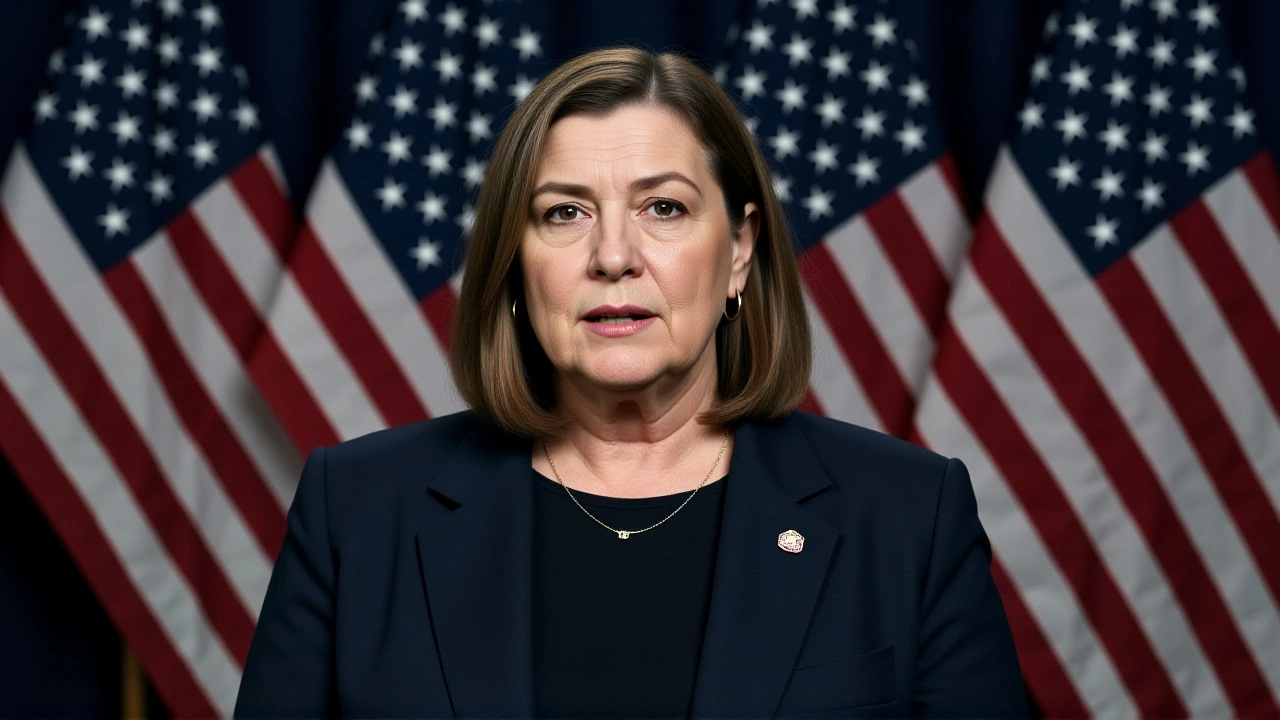When the Substance Abuse and Mental Health Services Administration (SAMHSA) released the 2024 National Survey on Drug Use and Health (NSDUH), it didn’t just update statistics—it exposed a nation pulling in opposite directions. Across 70,241 completed interviews from 203,743 screened households, the data revealed that nearly 1 in 5 Americans aged 12 or older struggled with a mental illness last year, while opioid misuse climbed in rural counties even as urban areas saw declines. The findings landed just weeks after voters headed to the polls on the 2024 U.S. presidential electionUnited States, where Kamala Harris and Donald Trump battled for control of the Electoral College. What emerged wasn’t just a political divide—it was a health divide, a voting divide, and a future divide, all mapped state by state.
Health Disparities Paint a Fragmented Nation
Samhsa’s 2024 NSDUH found that 19.4% of U.S. adults experienced a mental illness in the past year, but the numbers varied wildly. In Oklahoma, nearly 24% of adults reported serious psychological distress—double the rate in Minnesota, where only 12% did. Substance use told a similar story: West Virginia led the nation in methamphetamine use, while California had the highest rate of cannabis use among youth. The survey, which excluded homeless populations and institutionalized individuals, likely undercounted the true scale of crisis—especially in states with weak safety nets.
Meanwhile, The Trevor Project released its 2024 survey of LGBTQ+ youth mental health, covering all 50 states and U.S. territories. The data was chilling: 45% of LGBTQ+ teens seriously considered suicide in the past year, with rates above 55% in states like Alabama and Texas, where legislation targeting gender-affirming care had intensified. In contrast, states with strong protections—like New York and Washington—saw rates closer to 30%. "It’s not just policy," said a Trevor Project researcher. "It’s the air these kids breathe. If their state legislature says they’re a threat, they believe it."
How Voting Patterns Mirrored Health Trends
The presidential race on the 2024 U.S. presidential electionUnited States wasn’t decided by national polls alone. It was shaped by state-level turnout and demographic shifts. Pre-election polling through July 2024 showed Trump leading Harris by 2-3 percentage points across major surveys. Emerson College’s July 18 poll had Trump at 44%, Harris at 38%. Fox News had Trump up 44% to 41%. Even in battleground states like Pennsylvania and Georgia, the gap held steady—despite Biden’s withdrawal and Harris’s late surge.
What’s striking is how these political fault lines aligned with health outcomes. States with the highest rates of opioid overdose deaths—Ohio, Kentucky, Missouri—were also the ones that delivered their electoral votes to Trump. Meanwhile, states with the strongest mental health infrastructure and lowest substance use rates—Massachusetts, Colorado, Illinois—voted overwhelmingly for Harris. The correlation isn’t perfect, but it’s hard to ignore.

The Voting System Behind the Numbers
The Election Assistance Commission (EAC) didn’t release its 2024 EAVS Comprehensive Report until June 30, 2025—but its preliminary findings, gathered from all 50 states and territories, revealed troubling inconsistencies. Voter registration list maintenance varied wildly: Florida purged over 1.2 million names in 2024, while Minnesota kept its rolls accurate with fewer than 200,000 removals. Mail-in ballot access was another flashpoint. In California, 78% of voters used mail ballots. In Tennessee, fewer than 15% did. The result? Turnout gaps of up to 22 percentage points between states.
"It’s not about fraud," said a former EAC commissioner. "It’s about access. When a state makes voting harder for low-income, elderly, or disabled voters, you’re not just changing turnout—you’re changing who gets heard in policy debates about health care, housing, and addiction treatment."
What This Means for 2025 and Beyond
The 2024 data paints a future where political power and public health are increasingly intertwined. States that invested in community mental health clinics, harm reduction programs, and LGBTQ+ youth services saw lower suicide rates and higher voter turnout among young people. States that cut funding or passed restrictive laws saw the opposite.
One thing is clear: the next administration won’t just inherit a divided Congress—it will inherit a divided country in terms of well-being. The SAMHSA infographic showing trends from 2021 to 2024 reveals a troubling acceleration in youth anxiety and substance use in red states. Meanwhile, blue states are beginning to see the cost of inaction in aging populations with untreated trauma.
Experts warn that without federal coordination—or at least state-level innovation—the U.S. could face a decade of worsening health outcomes tied directly to political ideology. "We’ve turned mental health into a partisan issue," said Dr. Elena Ruiz, a public health professor at Johns Hopkins. "That’s not just unethical. It’s dangerous."

Behind the Data: What Wasn’t Measured
It’s worth noting what these surveys left out. The NSDUH didn’t count people experiencing homelessness. The EAVS didn’t capture the impact of voter suppression tactics like strict ID laws or reduced polling hours in minority neighborhoods. The Trevor Project’s survey, while comprehensive, relied on self-reporting from youth who had access to the internet.
"We’re measuring the visible crisis," said a SAMHSA analyst. "But the invisible one—the person who didn’t answer the phone, who couldn’t get online, who was too scared to speak—those are the ones we’re failing most."
Frequently Asked Questions
How did mental health trends differ between red and blue states in 2024?
States that voted for Kamala Harris generally had lower rates of serious psychological distress and substance use disorders. For example, Minnesota reported 12% adult mental illness versus Oklahoma’s 24%. LGBTQ+ youth suicide risk was also significantly lower in states with protective policies, like New York and Washington, compared to Alabama and Texas, where rates exceeded 55%.
Why does the NSDUH exclude homeless populations?
The NSDUH only surveys civilian, noninstitutionalized individuals with fixed addresses. This means over 600,000 homeless Americans—including many with severe mental illness or addiction—are left out. Experts say this undercounts the true scale of the crisis, especially in states like California and New York where homelessness has surged.
What role did voter access play in the 2024 election outcomes?
States with easy mail-in voting and extended early voting saw higher turnout among young and minority voters—groups that favored Harris. In contrast, states with strict ID laws and limited ballot access, like Tennessee and Georgia, saw lower turnout among these demographics. The EAC’s report showed turnout gaps of up to 22 percentage points between states.
How did LGBTQ+ youth mental health correlate with state legislation?
States that passed laws restricting gender-affirming care or banning LGBTQ+ topics in schools saw suicide risk among LGBTQ+ teens rise to over 55%. In contrast, states with inclusive policies and funding for youth mental health services saw rates drop to around 30%. The Trevor Project linked these disparities directly to legislative hostility and lack of affirming resources.
What’s the connection between substance use and voting patterns?
States with the highest opioid overdose rates—West Virginia, Ohio, Kentucky—voted overwhelmingly for Trump. Meanwhile, states with lower substance use and stronger public health infrastructure, like Massachusetts and Colorado, voted for Harris. While not causal, the pattern suggests that voters in areas with unmet health needs may prioritize different policy solutions.
What’s next for federal data collection on health and voting?
SAMHSA plans to expand its NSDUH to include mobile units in 2025 to reach homeless populations. The EAC is pushing for standardized national voting metrics. Meanwhile, The Trevor Project is lobbying for federal funding to link mental health data with school and election records to better understand how policy impacts youth. Without coordinated action, these datasets will continue to reveal a fractured America.

